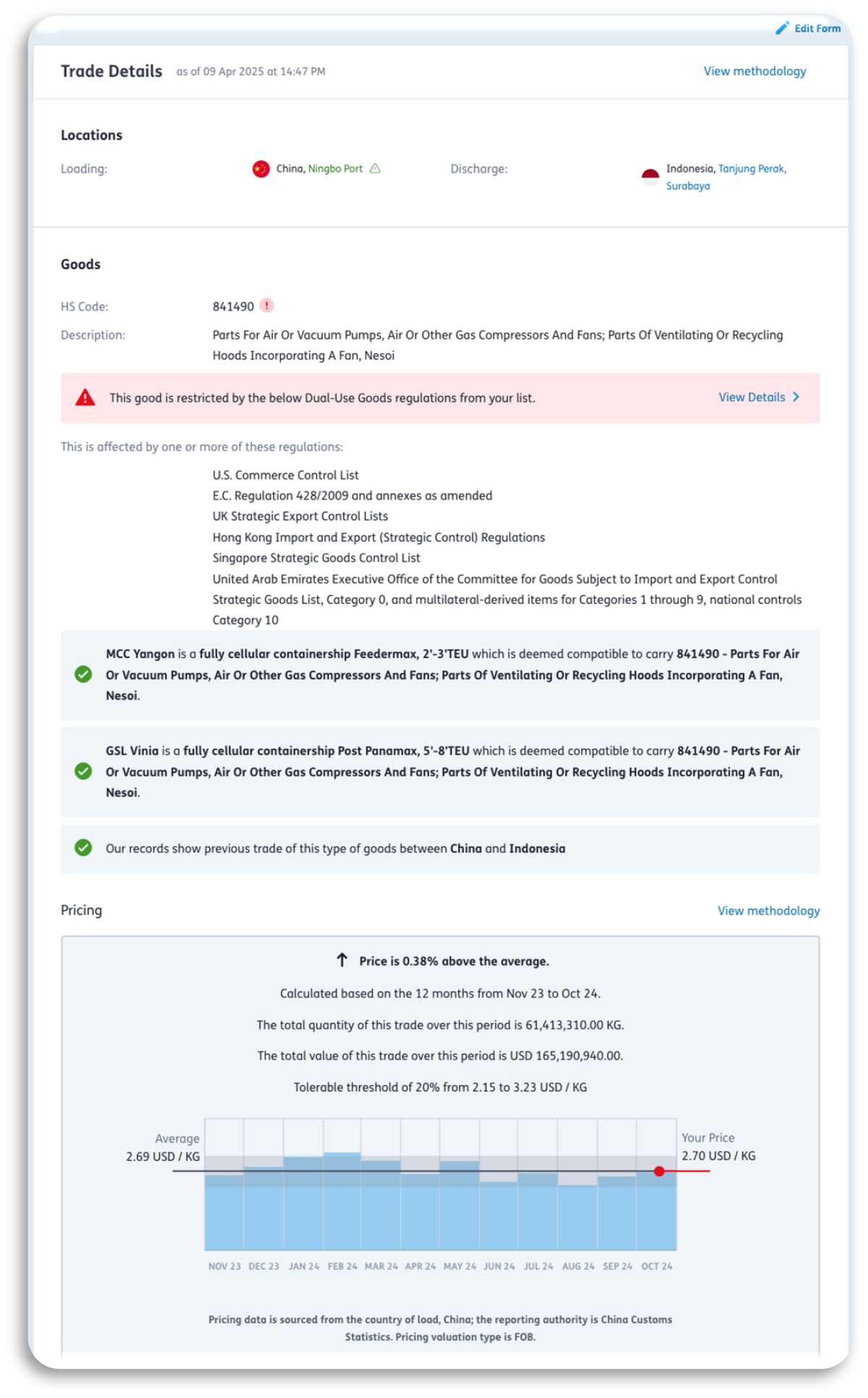
By Federico Viscioletti
Data Science Lead
At Lloyd’s List Intelligence, data quality is at the heart of everything we do. As a data-driven, tech-enabled business, we are constantly looking for ways to improve the accuracy and timeliness of our insights, two pillars of our proprietary COACT framework (Consistency, Origin, Accuracy, Completeness, Timeliness).
In one of our latest product launch, Seasearcher Trade Risk, we’ve taken a major leap forward by implementing AI to automate a critical step in trade risk analysis: goods description matching to HS codes.

Why This Matters
Converting goods descriptions into the correct Harmonized System (HS) codes is essential for risk assessment, including verifying declared prices and flagging potential compliance issues. Traditionally, this process has been manual, slow, and prone to human error, increasing operational delays and regulatory exposure.

A Data-Driven Solution: AI-Powered Matching
To solve this, we built a powerful AI-driven HS code recommendation engine that uses advanced sentence transformer technology. Here’s how it works:
This innovation is more than just a time-saver, it transforms how our clients interact with trade data, allowing them to make faster and more accurate decisions.

Delivering COACT-Driven Value
The HS code recommendation engine is a clear example of how we live our COACT data quality commitment:

The Outcome: Smarter Risk Insights, Delivered Faster
The result is a step-change in our Trade Risk solution: a more intelligent, responsive platform that helps clients identify risk indicators earlier, verify anomalies more efficiently, and streamline compliance workflows.
With AI doing the heavy lifting, users can focus on what really matters, making strategic decisions based on high-quality, timely intelligence.
Seasearcher Trade Risk offers a suite of advanced tools designed to draw your attention to activity that could represent fraud across all trade modes. Our intelligent solution enables businesses to identify potential fraud by offering powerful, real-time detection tools that address compliance risks and anomalies early on.
